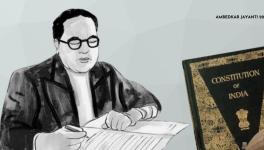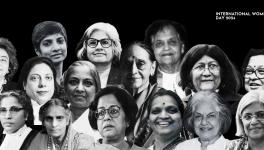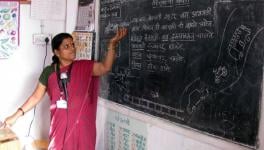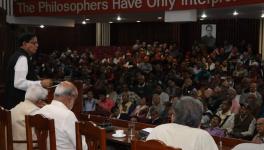A Critique of Elite Campus Culture
Democracy works in uncanny ways in India’s renowned, premier and privileged academic spaces. To an extent, these institutes are answerable to the public and the “law and order” system. These spaces even represent the idea of democracy, but they are suffocated by the grip of the oppressor castes who have controlled them since their inception. Often, this suffocation shows up in the suicides—institutionalised killings—of students from oppressed backgrounds. Not long ago, these institutes were almost like agraharas, sacred, but that was only so long as they were dominated by just one kind of self, that of the oppressor. Access to these institutes was nearly the oppressor’s birthright. However, democracy gave everybody aspirations and the right to pursue them.
After fighting a long battle, the most oppressed also made their way into these so-called educational spaces, dreaming of liberation through the education they would supposedly receive there. Their arrival and presence made the oppressor uncomfortable, even more insecure, but the woes do not end there.
Over the last three decades, another kind of person, who is perennially perplexed about identity within the caste structure, has started entering these institutes. This person policed the oppressed ever since caste became a rigid system. They unleashed physical force on the downtrodden for centuries, especially in the villages.
As a result, now, all three are emerging from their caste ghettos—the oppressor, the oppressed and the perplexed. They find themselves in one place in these institutes of learning, where they attend class together, sip tea at the same canteens, and, at times, romance each other, or drink together. While these activities completely obscure their psychological disarrangements—who they are deep down—their subconscious is continually disrupted in such spaces. Only a rare species among them has any inkling of this disruption.
In How Fascism Works, Jason Stanley writes, “…to honestly debate what our country should do, what policies it should adopt, we need a common basis of reality, including our own past.” Alas! His words touch the aching nerve of our caste identities. Do these three selves in our educational institutes have a common basis of reality or a shared past? Their history tells them they stand in opposition to each other, hate each other, and, at times, hold grudges. Can a ‘democratic’ space where they have come seeking education produce an honest debate between them?
I believe education de-institutionalises us. But it is caste that has institutionalised the self. Therefore, in institutions dominated by the oppressor castes, the self is overtly and unashamedly institutionalised—more concrete and rigid. That is why our so-called academic sites, our visions of democracy adopted by a caste nation, are eerie spaces. Despite multiple selves across caste locations, there is no “national” uniformity or consciousness. It is why there is no basis for mutual dialogue to develop empathy which is crucial to any revolutionary sense of change.
Where there is caste, liberation lies in interrogating your emotional self because that determines whether you can empathise with fellow citizens or not. If not, one must go through a colossal destruction of the self and rebuild it. This process is imperative because caste killed reason, logic and sensibilities from our lives long ago. I am no exception. I am not immune from the assault of caste over emotion.
In Frantz Fanon, I found a guide who directs me to understand my emotional vulnerabilities and their sources. His most remarkable talent was the ability to explain the deterioration of humans by connecting personal emotional codes to the political conspiracies that have affected society throughout history and across nations. From time to time, for almost a decade, I navigated my way through premier academic institutions. There, I witnessed my failures to understand my reality, the people around me and how the politics of my age affected me emotionally, psychologically, and even physiologically.
But I was concerned about my emotional self and its place in the national discourse. Fanon writes in The Wretched of the Earth, published in 2001, “Traditional weakness, which is almost congenital to the national consciousness of under-developed countries, is not solely the result of the mutilation of the colonised by the colonial regime. It is also the result of the intellectual laziness of the national middle class, of its spiritual penury, and of the profoundly cosmopolitan mould that its mind is set it.”
One needs to decode what he writes in his native context to my context, which is of a caste society. Caste was solidly Brahmanised before this country was colonised and it is still Brahmanised. After all, who did colonisation affect in India, and in what ways? The dalits, who gained access to education and, to an extent, dignified work, obviously were not negatively impacted by colonisation. When the British came, the oppressor caste (Brahmin) was affected to the extent that it was brought under the purview of law and order. But their cultural position, access to public resources and dominance remained unaffected. This change agitated them, as they were no longer free to unleash the atrocities of their desires onto dalits and other non-elite castes while staying unanswerable. Before the British colonisers, or other invaders, Brahmanism was the law here. But while colonisation ended in 1947, Brahmanisation prevailed.
This is why, in university spaces, the Brahmanised selves do not speak about what they gained under British rule—a place in the civil services, judiciary, and academia, and access to world culture—but lament what they lost, their vulgar privilege vis-a-vis the lower caste masses. They propagated the notion that British rule was evil, introduced caste in India, and so on. But they never interrogated their atrocities, privileges or dominance over every field. For example, their generational privileges made them the first to attend universities in first-world countries. So, India’s “traditional weakness” in forging a national consciousness is not due to colonisation but because of the concealment of the evils of Brahmanisation.
Consequently, those whose caste status puts them in a perennial identity crisis—India’s numerical majority that unleashes atrocities on behalf of the oppressor against those who do not abide by caste rules—are always looking up. They, like the oppressors, do not want to see who they are trampling beneath their feet, the most oppressed dalits.
There is no “intellectual laziness” in India, which Fanon finds in non-caste societies. The concern here is the intellectual dishonesty of the oppressors and their followers, those who police the dalits to keep Brahmanical, patriarchal and sexist traditions alive. This group hides historical realities and aggressively seeks to establish the mythical past in day-to-day lives. Caste is fascist in nature, for it is supported by an invented past. We can find all these oppressor selves and their followers—simultaneously victimised by the oppressor to a degree—in our university spaces.
And the third self, of the most oppressed, the ones crushed the most by the burden of caste, is also in these spaces. How do all three navigate one physical and mental space? Each is wounded by caste, all are its victims, but in a relative sense. Of course, the most oppressive are the least victimised because they have fertile instincts to detect and fight injustice. That is why they revolted—in literature, social life, and spiritual vision—from time to time. But the middle self allied to the oppressor has a relatively privileged position compared with the most oppressed. Their intermediate position denies them a clear vision of where they stand toward their liberation.
In a university, all three sets of individuals have no clue how to share something in common. Because where there is caste, there nothing can be mutual. So, intimate relations, whether social, cultural, political or emotional, in academic spaces are built essentially on caste affiliations, privileges and interests—and the vulnerabilities that accompany them. Yet, curiously, there is talk about liberation, ideology and emancipation in these spaces. In India, such discourses are born and die within the university space because they are not produced from a shared past or history. They fail to agitate citizens together because where there is caste, there can never be a mass or masses.
So long as I was an active member on such a campus, I found it difficult to connect with people and realised the difficulty was not mine alone. Our history is caste history, and each caste stands in negation to the other. How do we feel connected when, through history, we have denied each other? When we never dared imagine a future together? We had to roam the same campus, share food, smoke the same cigarette or get romantically or sexually involved. But when the time came, we parted as if we never existed in each others’ lives. After all, we never felt connected. Democracy brought us together, but we remained separated by our castes. Caste is uncanny in democracy. To be normal is to de-caste ourselves—but how? Only if we interrogate our caste histories and their role in making us who we are today.
Yogesh Maitreya is a poet, translator and founder of Panther’s Paw Publication, an anti-caste publishing house. He is pursuing a PhD at the Tata Institute of Social Sciences, Mumbai.
Disclaimer: The views expressed in this article are the writer's own, and do not necessarily represent the views of the Indian Writers' Forum.
Get the latest reports & analysis with people's perspective on Protests, movements & deep analytical videos, discussions of the current affairs in your Telegram app. Subscribe to NewsClick's Telegram channel & get Real-Time updates on stories, as they get published on our website.
























